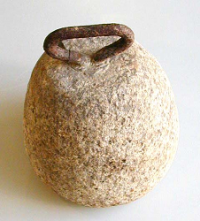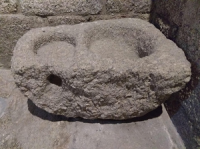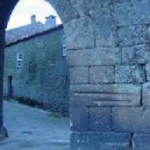
MIDDLE AGES: THE FIRST WEIGHTS AND MEASURES
 The measurement systems used in the territory that began as the earldom of Portugal and then became the kingdom of Portugal were based on measures of various origins. We can find some influence of European measures and Roman heritage, but, and above all, a very strong Arab tradition.
The measurement systems used in the territory that began as the earldom of Portugal and then became the kingdom of Portugal were based on measures of various origins. We can find some influence of European measures and Roman heritage, but, and above all, a very strong Arab tradition.
The majority of the measures stemmed from Arab culture, such as the first units of volume, the alqueire, almude and teiga, or, in the case of weight, the arroba and arrátel. The moio, quarteiro and sesteiro originate in the Roman system of the distant past. The búzio and tonel express the influence of commerce with other parts of Europe.
 Weights and measures were very relevant for the determination of taxes and the trade of goods and commodities, and, like money, they were instruments of power and vassalage.
Weights and measures were very relevant for the determination of taxes and the trade of goods and commodities, and, like money, they were instruments of power and vassalage.
The establishment and regulation of weights and measures was a royal privilege. Generally, the weights and measures used by the populations of each municipality were defined in the Charter attributed, usually, by the king, although some preceded the establishment of the Portuguese kingdom.

In the Middle Ages it was common for the same measure to correspond to different values, varying from municipality to municipality or, in the same municipality, depending on the purpose for which it was used. Often, a portion was added to the measure “for souls”.